Abstract
51Cr labelled strain A erythrocytes transfused into various H-2 incompatible mouse strains (A.CA, A.BY, A.SW, C3H and DBA/2) were not eliminated more rapidly than after transfusion into compatible strain A recipients. In contrast, C57BL and, in particular, C57L mice often eliminated strain A red cells at an accelerated rate. Attempts were made to analyse the mechanism responsible for red cell survival in strains other than C57L and C57BL. Red cells surviving normally in H-2 incompatible recipients nevertheless induced the formation of humoral antibodies directed against themselves. Transfusion of erythrocytes into actively immunized recipients resulted in the rapid elimination of one fraction of the population, whereas the surviving fraction was eliminated at the same rate as in isologous hosts. Analogous results were obtained after transfusion into H-2 incompatible recipients passively immunized with humoral anti-H-2 antibodies. Large doses of antibodies or antibodies plus passively transferred guinea-pig serum (0.5 ml. per recipient) as a source of complement did not increase the proportion of eliminated red cells. Passively transferred humoral antibodies were capable of eliminating a fraction of the red cells only if given before or during the first 4 days after transfusion; they had no such effect if given later. The failure of antibodies to eliminate all transfused cells was not caused by the existence of a fraction of antibody-resistant cells, since the antibodies caused complete lysis of the red cells in vitro in the presence of complement. It is suggested that a combination of antibodies and some host factors induce a change in the red cells that makes them resistant against isoimmune destruction.
Full text
PDF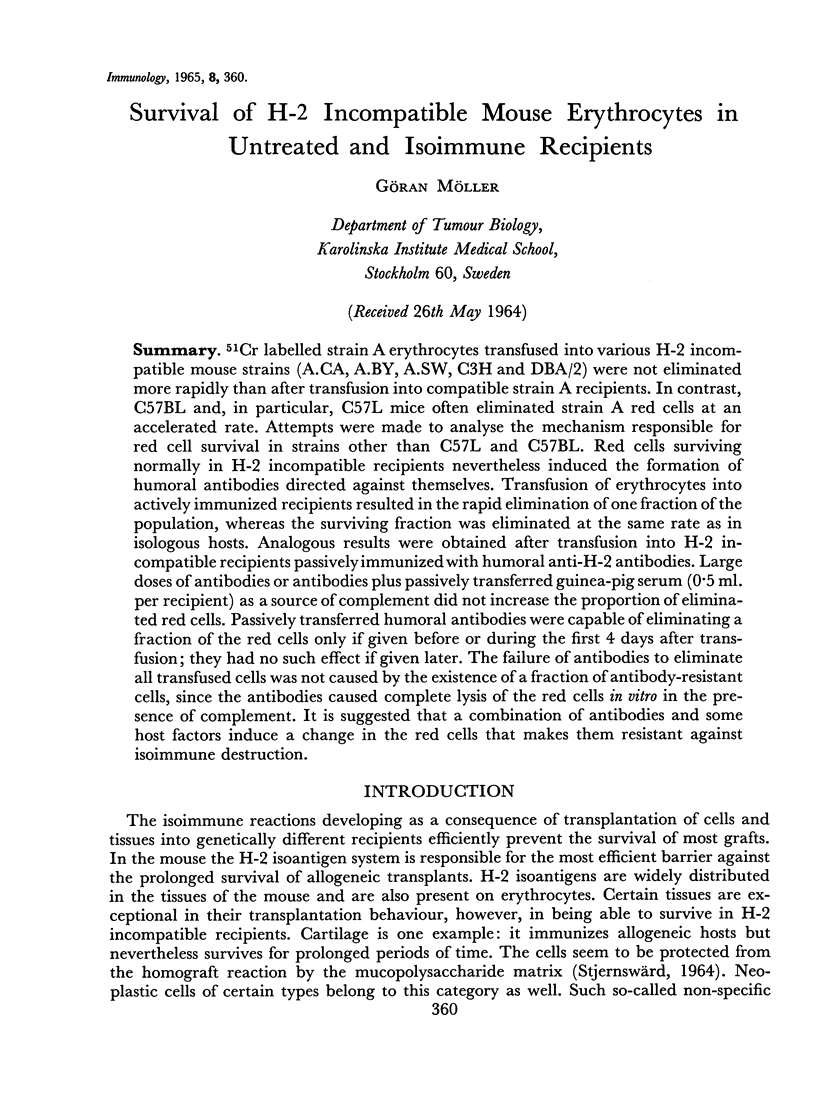
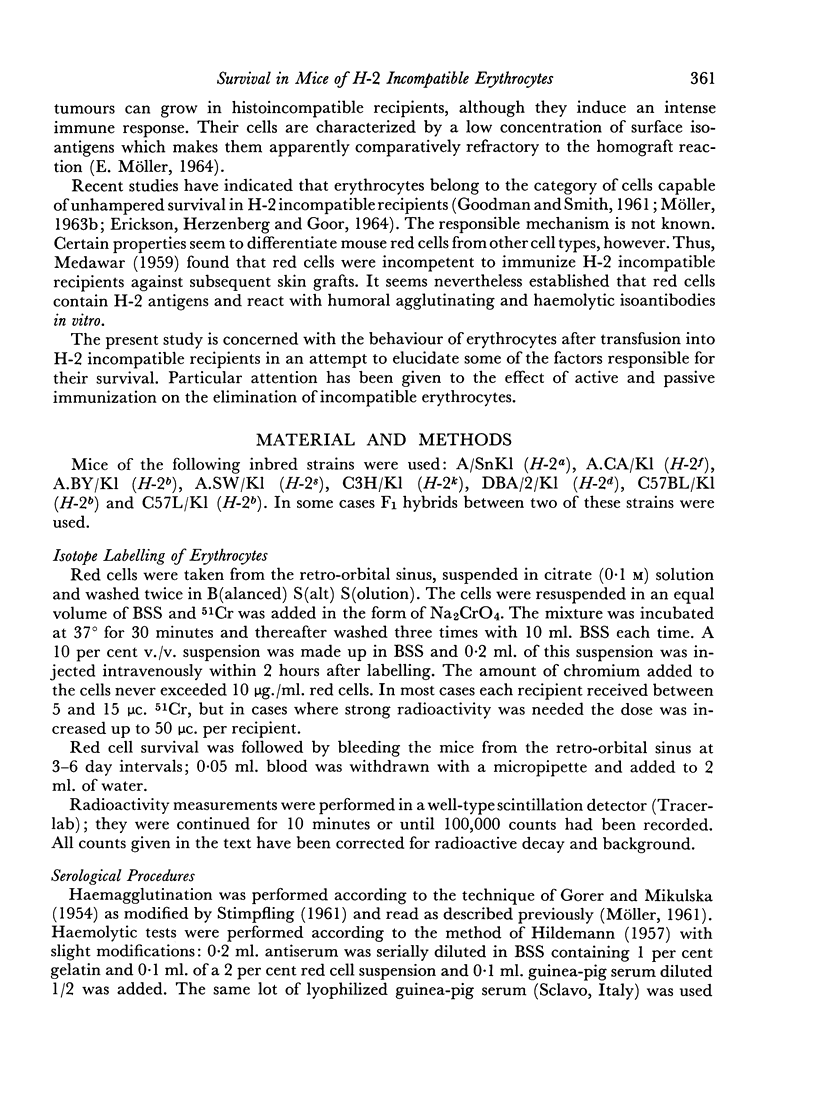
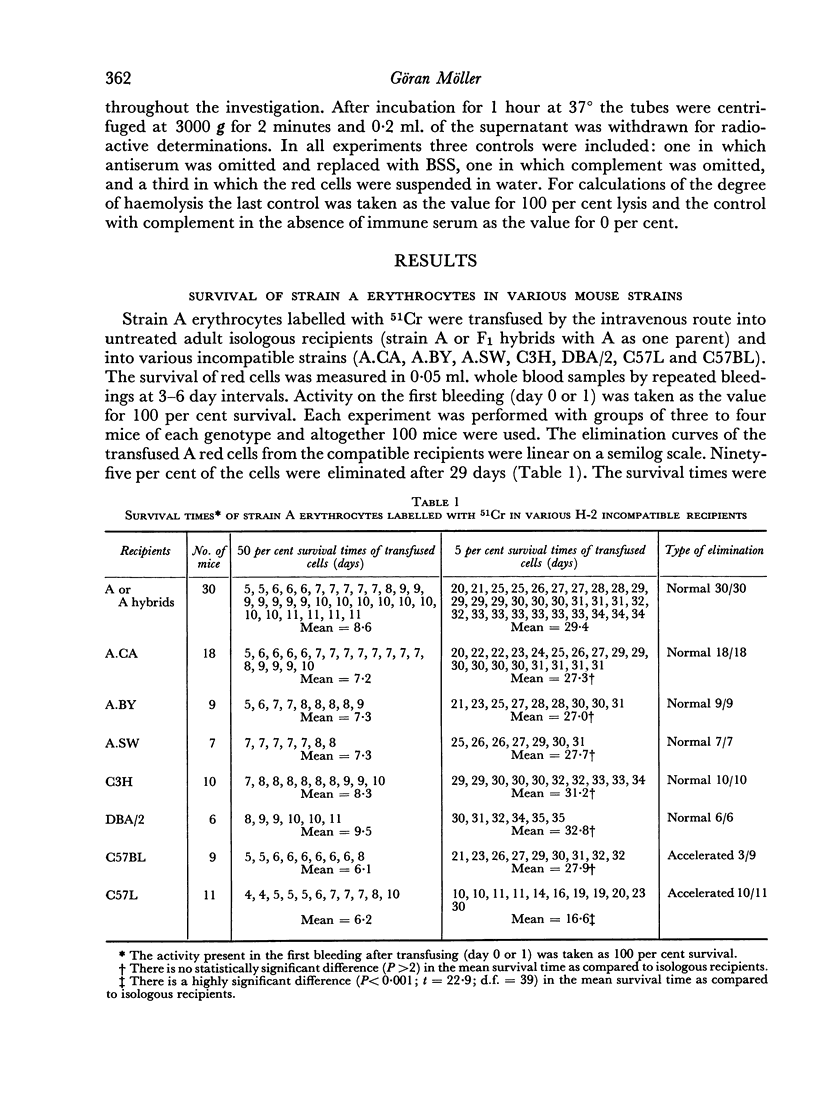
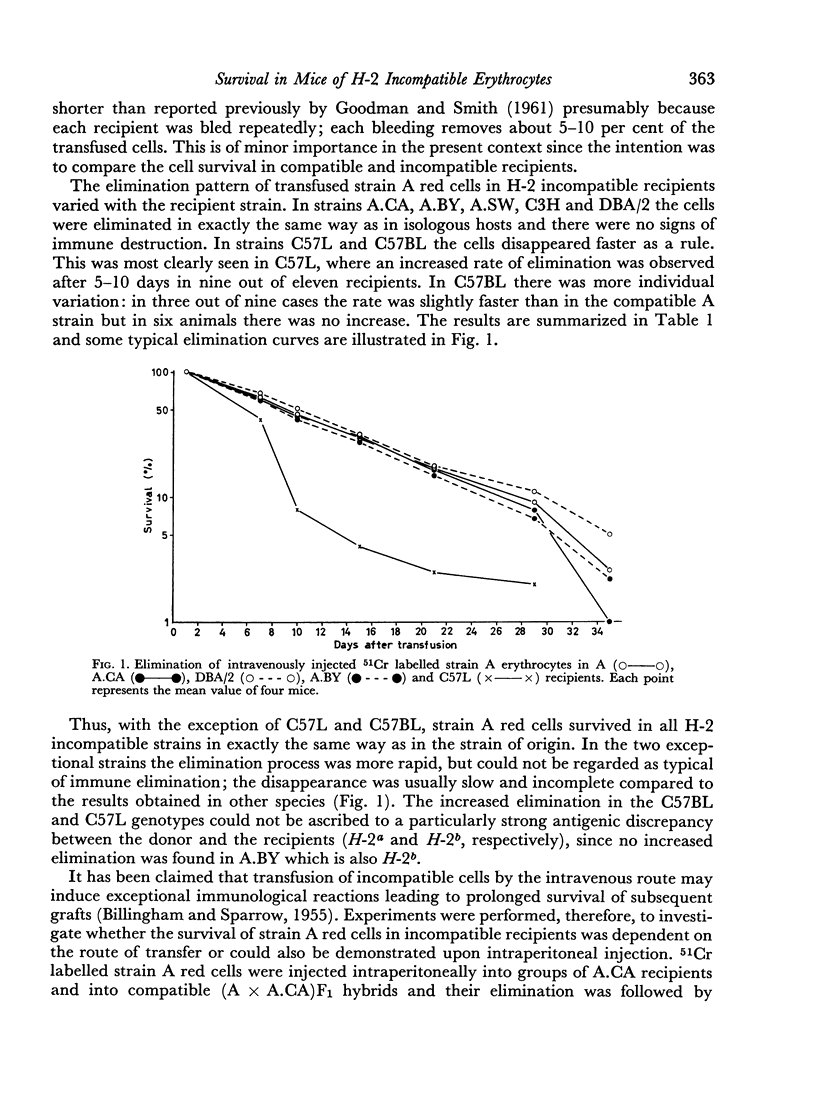
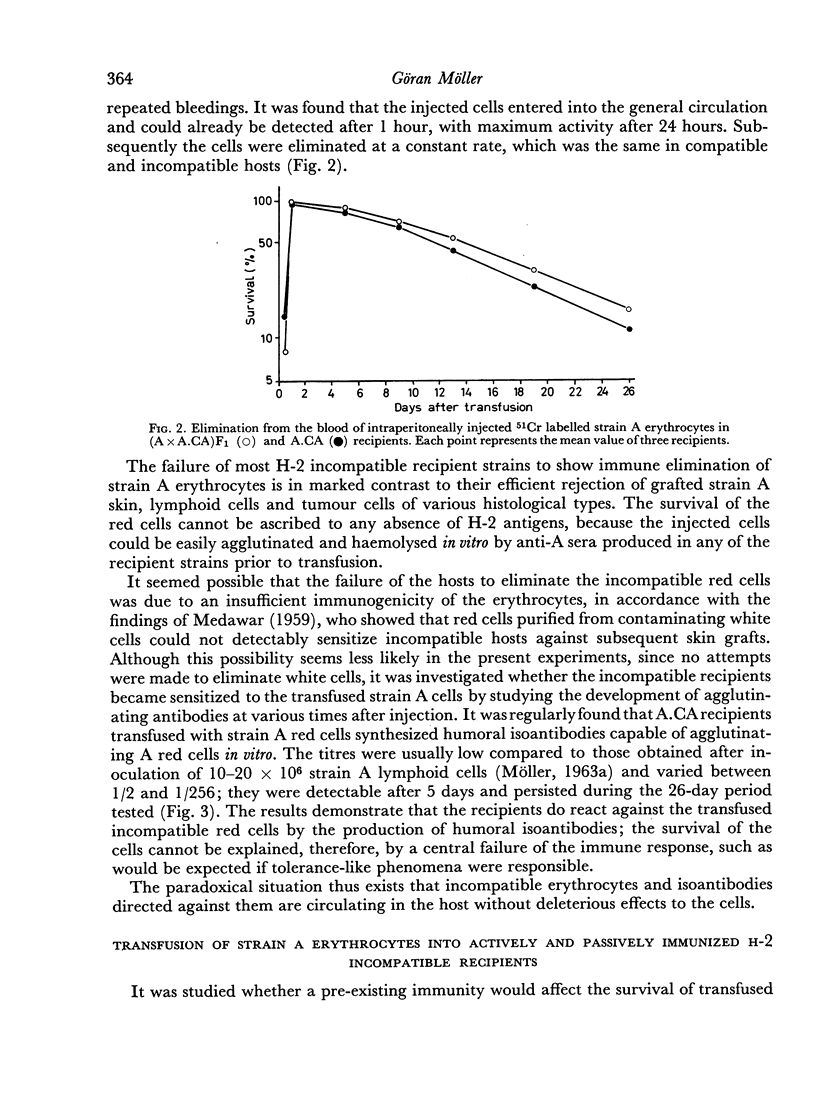
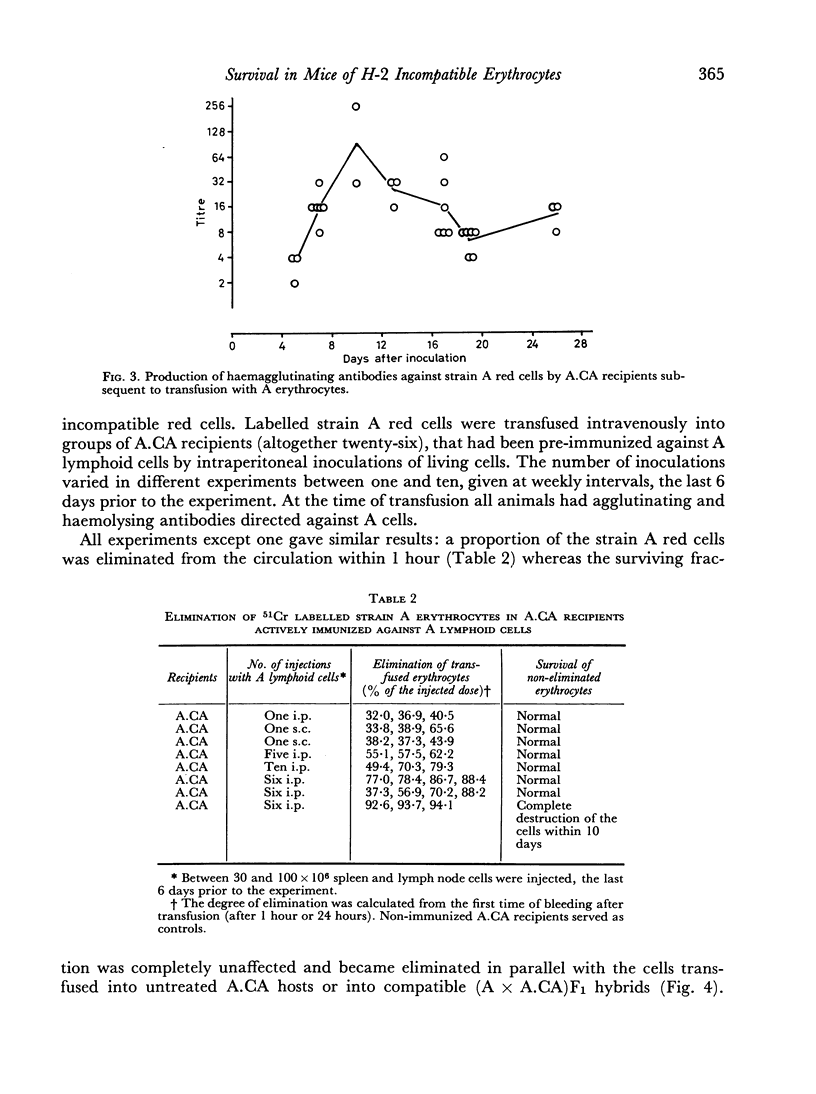

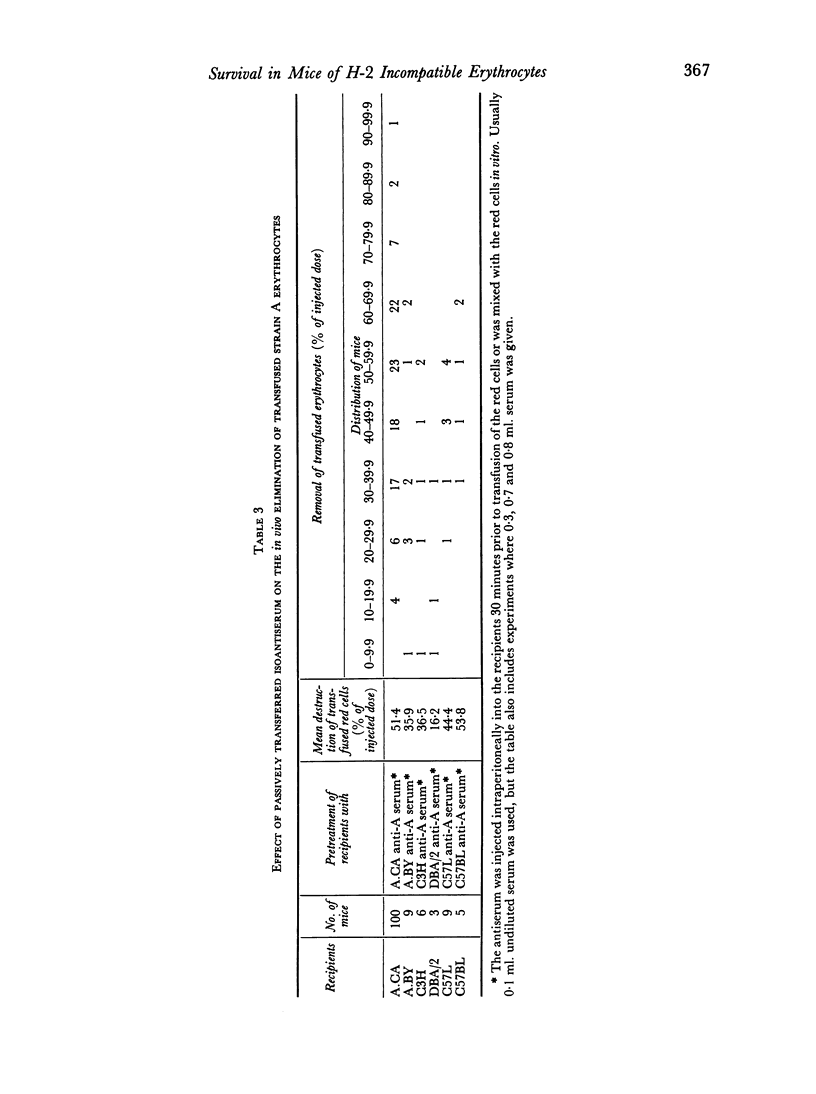
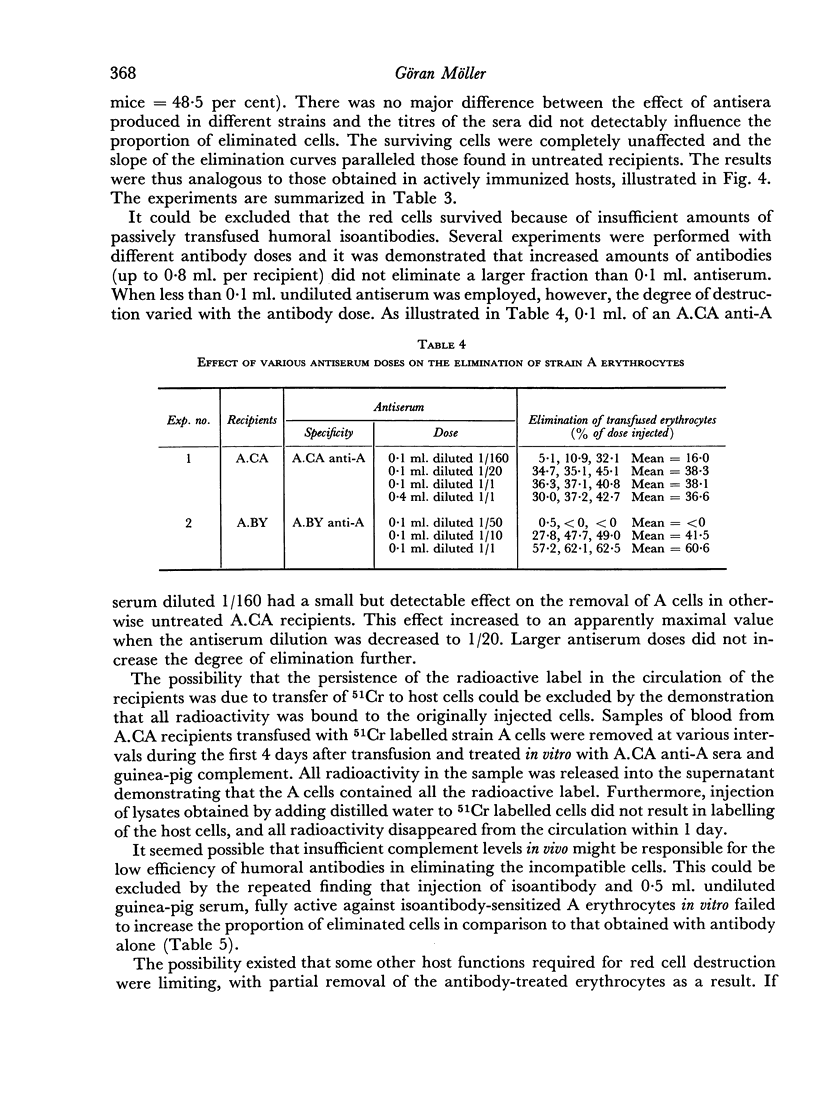
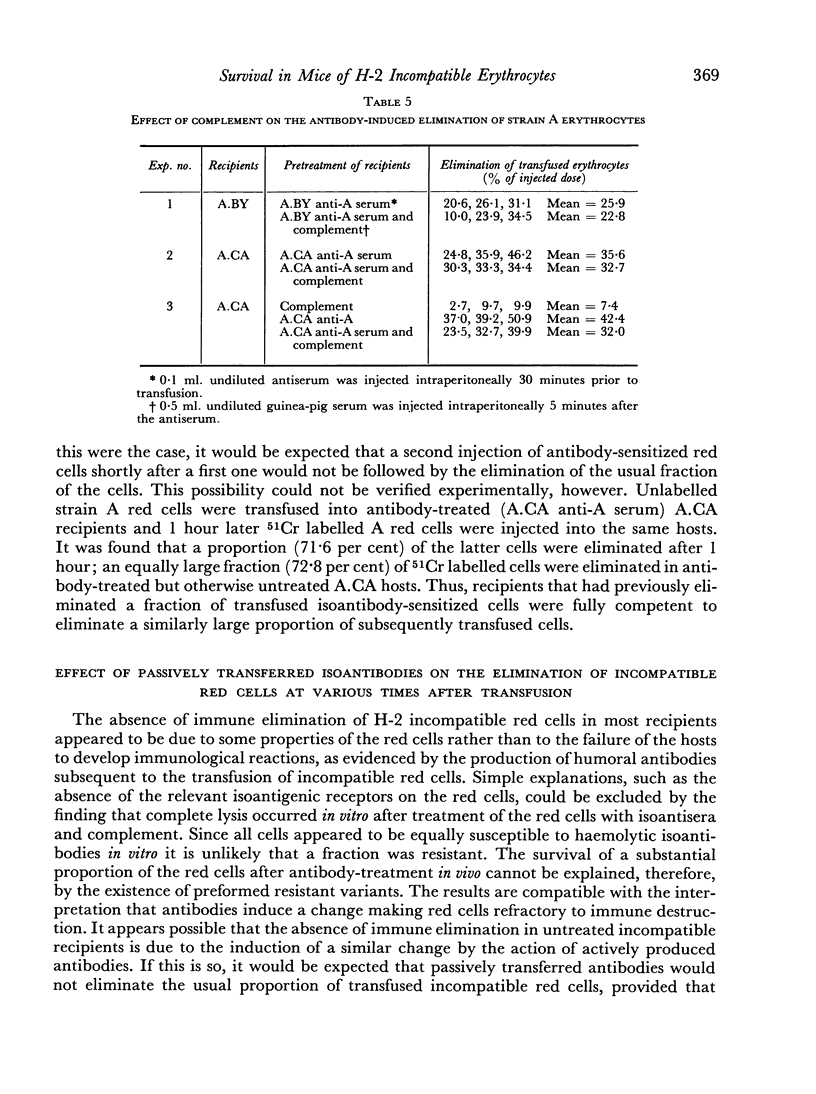


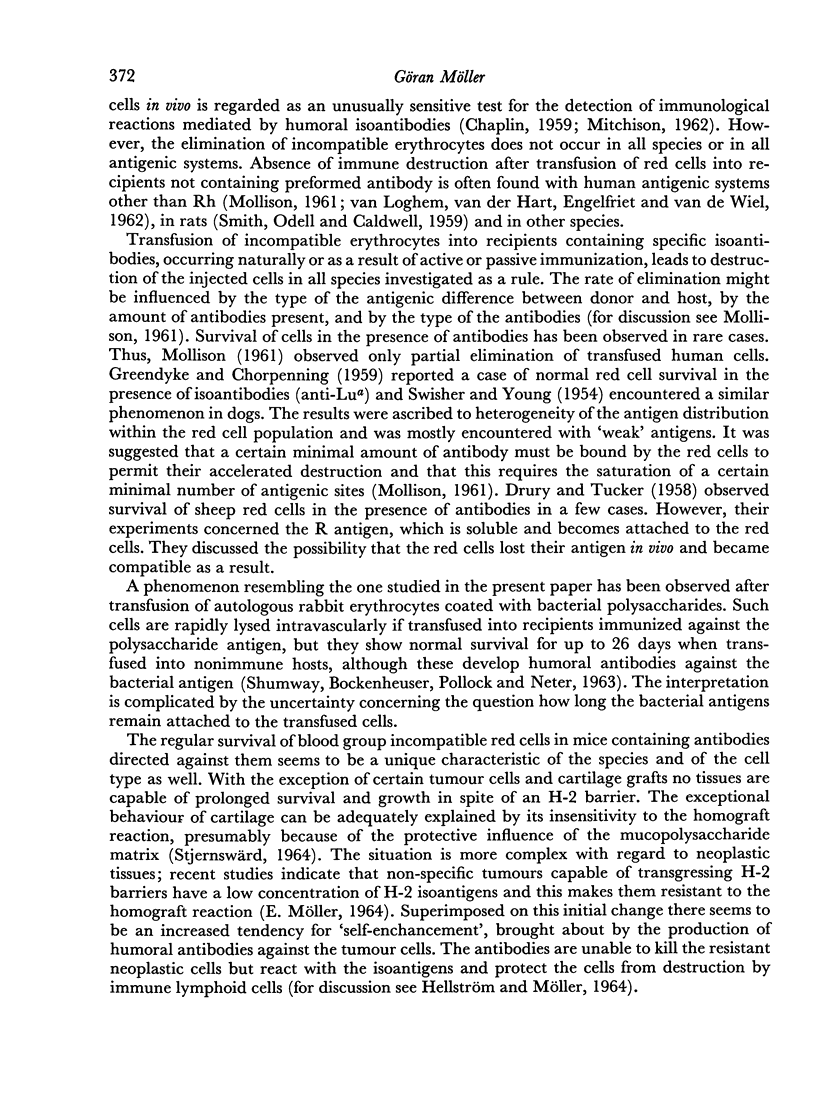
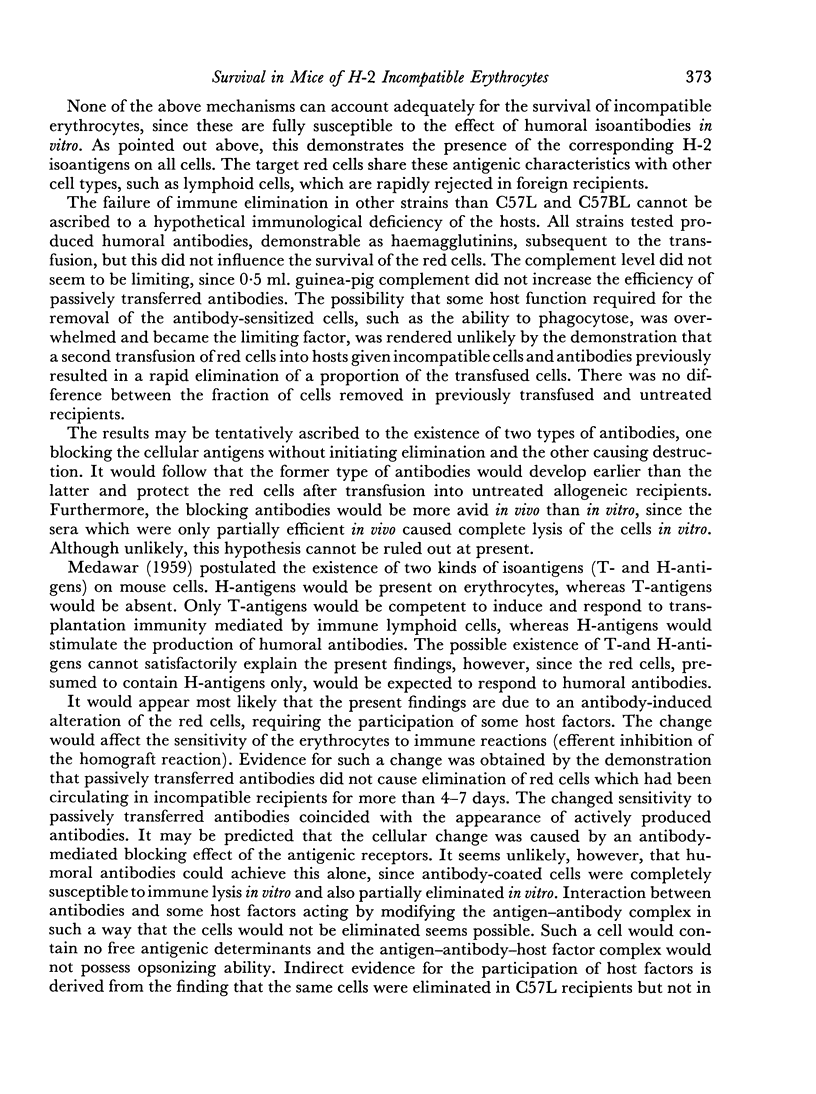
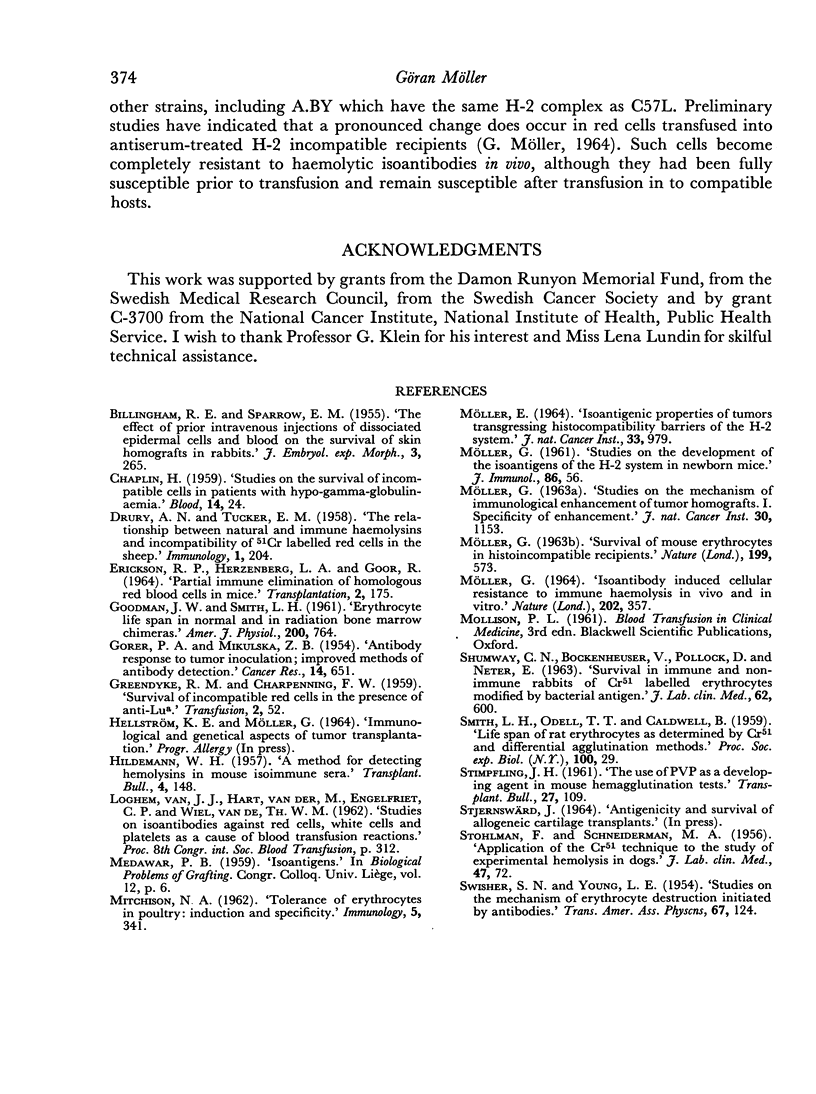
Selected References
These references are in PubMed. This may not be the complete list of references from this article.
- CHAPLIN H., Jr Studies on the survival of incompatible cells in patients with hypogammaglobulinemia. Blood. 1959 Jan;14(1):24–36. [PubMed] [Google Scholar]
- DRURY A. N., TUCKER E. M. The relationship between natural and immune haemolysins and incompatibility of 51Cr labelled red cells in the sheep. Immunology. 1958 Jul;1(3):204–216. [PMC free article] [PubMed] [Google Scholar]
- ERICKSON R. P., HERZENBERG L. A., GOOR R. PARTIAL IMMUNE ELIMINATION OF HOMOLOGOUS RED BLOOD CELLS IN MICE. Transplantation. 1964 Mar;2:175–182. doi: 10.1097/00007890-196403000-00002. [DOI] [PubMed] [Google Scholar]
- GOODMAN J. W., SMITH L. H. Erythrocyte life span in normal mice and in radiation bone marrow chimeras. Am J Physiol. 1961 Apr;200:764–770. doi: 10.1152/ajplegacy.1961.200.4.764. [DOI] [PubMed] [Google Scholar]
- GORER P. A., MIKULSKA Z. B. The antibody response to tumor inoculation; improved methods of antibody detection. Cancer Res. 1954 Oct;14(9):651–655. [PubMed] [Google Scholar]
- GREENDYKE R. M., CHORPENNING F. W. Normal survival of incompatible red cells in the presence of anti-Lu-a. Transfusion. 1962 Jan-Feb;2:52–57. doi: 10.1111/j.1537-2995.1962.tb00192.x. [DOI] [PubMed] [Google Scholar]
- HILDEMANN W. H. A method for detecting hemolysins in mouse isoimmune serums. Transplant Bull. 1957 Oct;4(4):148–149. [PubMed] [Google Scholar]
- MITCHISON N. A. Tolerance of erythrocytes in poultry:induction and specificity. Immunology. 1962 May;5:341–358. [PMC free article] [PubMed] [Google Scholar]
- MOELLER E. ISOANTIGENIC PROPERTIES OF TUMORS TRANSGRESSING HISTOCOMPATIBILITY BARRIERS OF THE H-2 SYSTEM. J Natl Cancer Inst. 1964 Dec;33:979–989. [PubMed] [Google Scholar]
- MOLLER G. ISOANTIBODY-INDUCED CELLULAR RESISTANCE TO IMMUNE HAEMOLYSIS IN VIVO AND IN VITRO. Nature. 1964 Apr 25;202:357–359. doi: 10.1038/202357a0. [DOI] [PubMed] [Google Scholar]
- MOLLER G. SURVIVAL OF MOUSE ERYTHROCYTES IN HISTOINCOMPATIBLE RECIPIENTS. Nature. 1963 Aug 10;199:573–575. doi: 10.1038/199573a0. [DOI] [PubMed] [Google Scholar]
- MOLLER G. Studies on the development of the isoantigens of the H-2 system in newborn mice. J Immunol. 1961 Jan;86:56–68. [PubMed] [Google Scholar]
- MOLLER G. Studies on the mechanism of immunological enhancement of tumor homografts. I. Specificity of immunological enhancement. J Natl Cancer Inst. 1963 Jun;30:1153–1175. [PubMed] [Google Scholar]
- SHUMWAY C. N., BOKKENHEUSER V., POLLOCK D., NETER E. SURVIVAL IN IMMUNE AND NONIMMUNE RABBITS OF CR51-LABELED ERYTHROCYTES MODIFIED BY BACTERIAL ANTIGEN. J Lab Clin Med. 1963 Oct;62:600–607. [PubMed] [Google Scholar]
- SMITH L. H., ODELL T. T., Jr, CALDWELL B. Life span of rat erythrocytes as determined by Cr51 and differential agglutination methods. Proc Soc Exp Biol Med. 1959 Jan;100(1):29–31. doi: 10.3181/00379727-100-24512. [DOI] [PubMed] [Google Scholar]
- STOHLMAN F., Jr, SCHNEIDERMAN M. A. Application of the Cr51 technique to the study of experimental hemolysis in the dog. J Lab Clin Med. 1956 Jan;47(1):72–82. [PubMed] [Google Scholar]
- SWISHER S. N., YOUNG L. E. Studies of the mechanisms of erythrocyte destruction initiated by antibodies. Trans Assoc Am Physicians. 1954;67:124–132. [PubMed] [Google Scholar]
- van LOGHEM J. J., Jr, van der HART, ENGELFRIET C. P., va de WIEL T. W. Studies on iso-antibodies against red cells, white cells and platelets as a cause of blood transfusion reactions. Bibl Haematol. 1962;13:312–318. doi: 10.1159/000426437. [DOI] [PubMed] [Google Scholar]


